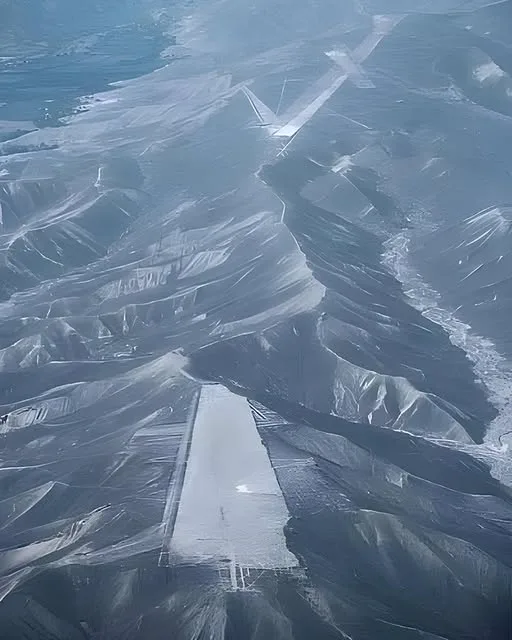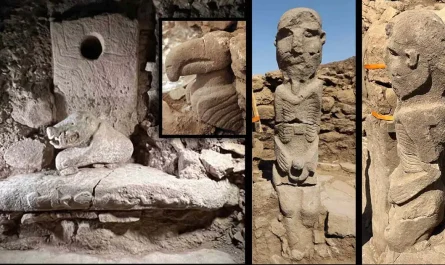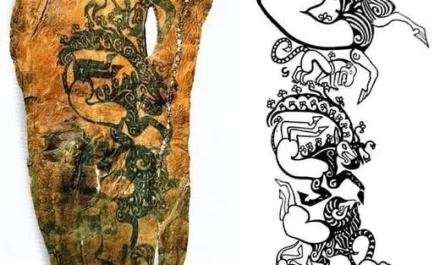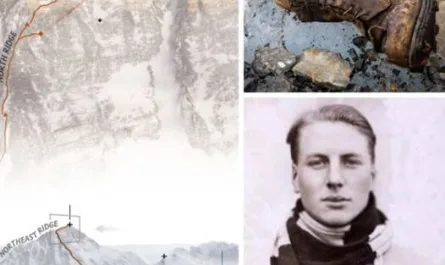The Nazca Lines: Enigmatic Stripes of an Ancient Desert Canvas
Etched into the arid plains of southern Peru’s Nazca Desert, the Nazca Lines are a collection of massive geoglyphs, including a series of elongated, parallel stripes that stretch across the landscape with astonishing precision. Created by the Nazca culture between 500 BCE and 500 CE, these ancient designs, best appreciated from the air, include not only the well-known animal and geometric figures but also vast linear formations whose purpose remains a mystery. As a UNESCO World Heritage site, the Nazca Lines continue to captivate archaeologists and visitors, sparking fascination with their scale, accuracy, and enigmatic intent as of 2025.

Discovery and Description
The Nazca Lines were first documented in the modern era in the 1920s when Peruvian archaeologist Toribio Mejía Xesspe noticed them while hiking in the desert. However, their full extent became clear with the advent of aerial photography in the 1930s, revealing hundreds of geoglyphs spread across 450 square kilometers. While the iconic figures—such as the hummingbird, spider, and monkey—draw much attention, the linear stripes, often extending for kilometers in straight or gently curving paths, are equally striking.
These lines, visible in recent aerial photographs, were created by removing the desert’s iron-oxide-coated pebbles to expose the lighter soil beneath, forming shallow trenches 10–15 centimeters deep and 30 centimeters to several meters wide. The arid climate, with minimal rainfall and wind, has preserved these designs for over 1,500 years. The stripes vary in form—some are perfectly parallel, others converge or intersect—displaying a precision that suggests advanced surveying techniques.

Creation and Techniques
The Nazca people, a pre-Inca civilization known for their ceramics and textiles, constructed the lines using simple tools and methods. Archaeologists believe they used wooden stakes, ropes, and basic geometry to plot the designs, with small-scale models possibly guiding larger creations. The linear stripes, some stretching up to 48 kilometers, required meticulous planning to maintain their straightness over uneven terrain.
The effort involved was immense, likely requiring communal labor over generations. The lines’ visibility from the ground is limited, suggesting they were meant to be seen from above—perhaps by deities, ancestors, or during rituals involving elevated viewpoints like nearby hills. The precision of the stripes, some deviating less than a meter over kilometers, reflects a sophisticated understanding of spatial organization, baffling modern researchers given the Nazca’s lack of advanced tools.
Theories on Purpose
The function of the Nazca Lines, particularly the linear stripes, remains one of archaeology’s great enigmas. Scholars have proposed several theories, none definitive:
- Ceremonial Pathways: The stripes may have served as sacred walkways for rituals, possibly linked to water or fertility cults, as water was scarce in the desert. Some lines lead to natural features like springs or hills, supporting this idea.
- Astronomical Alignments: Pioneered by archaeoastronomer Maria Reiche, this theory suggests the lines marked celestial events, such as solstices or constellations, aiding agricultural or ritual calendars. However, studies, like those by Anthony Aveni, show only partial alignments, casting doubt on a purely astronomical purpose.
- Social or Symbolic Functions: The lines may have marked territorial boundaries, communal gathering points, or symbolic representations of Nazca cosmology, with stripes connecting sacred sites or representing water flow in a metaphorical sense.
- Spiritual Communication: Some speculate the lines were offerings to sky gods, visible from above, or part of shamanic practices involving altered states of consciousness, where the designs held spiritual significance.
The diversity of theories reflects the lines’ complexity, with their true purpose likely combining multiple roles within Nazca society.
Preservation and Modern Significance
Designated a UNESCO World Heritage site in 1994, the Nazca Lines are a global cultural treasure, but their preservation faces challenges. Foot traffic, illegal vehicle access, and climate change-related weather shifts threaten the fragile geoglyphs. A 2009 incident involving Greenpeace activists damaging the site sparked international outcry, leading to stricter protections. As of 2025, Peru’s Ministry of Culture uses aerial drones and satellite imagery to monitor the lines, while restricting ground access to guided tours and observation towers.
Recent aerial photographs, showcasing the stripes’ stark beauty against the desert, have fueled renewed interest. Posts on X describe them as “a cosmic puzzle” and marvel at their “otherworldly precision,” with some users speculating about extraterrestrial origins—a theory largely dismissed by scholars in favor of cultural explanations. Tourism, particularly via small-plane flyovers, drives local economies but requires careful management to prevent environmental harm.
Challenges and Future Research
The Nazca Lines face ongoing risks from erosion, urban encroachment, and mining activities near the desert. Climate change, bringing rare but intense rains, could blur the shallow trenches. Preservation efforts focus on limiting human impact and using non-invasive technologies like LiDAR to map undiscovered lines without disturbing the site.
Future research aims to decode the lines’ purpose through interdisciplinary approaches, combining archaeology, anthropology, and geospatial analysis. Studies of nearby Nazca sites, like the Cahuachi ceremonial center, may reveal connections between the lines and ritual practices. Deciphering the Nazca’s still-untranslated iconography could also unlock new insights.
Conclusion
The Nazca Lines, with their mesmerizing parallel stripes and intricate geoglyphs, stand as a testament to the ingenuity and vision of the Nazca people. Etched into Peru’s desert 1,500–2,500 years ago, these massive designs continue to perplex and inspire, their purpose shrouded in mystery. Whether ceremonial pathways, astronomical markers, or spiritual symbols, the lines reflect a society capable of extraordinary feats. As aerial views reveal their grandeur, the Nazca Lines remain a timeless enigma, drawing the world to ponder the techniques and intentions behind one of humanity’s most enduring creations.





